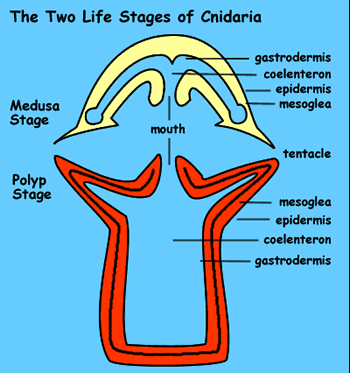
Describe The Process Of Feeding In Cnidarians. The gastrovascular cavity has only one opening that serves as both a mouth and an anus an incomplete. Describe the complete feeding process in cnidarians from catching to eating to getting rid of waste. Sea slugs which can incorporate nematocysts into their own bodies for self-defense. The tentacles capture small animals with their nematocysts and paralyze them with the poison they inject.

Food is taken into the gastrovascular cavity enzymes are secreted into the cavity and the cells lining the cavity absorb the nutrient products of the extracellular digestive process. The gastrovascular cavity has only one opening that serves as both a mouth and an anus an incomplete. Cnidarians are predators and feed on small fish krill etc. Prey of cnidarians ranges from plankton to animals several times larger than themselves. Cnidarians feed in several ways. Each nematocyst has a poison-filled sac containing a tightly coiled dart.
On the other hand many cnidarians anthozoans in particular depend on zooxanthellae symbiotic dinoflagellates within the tissues to survive.
As feeding stops contractions of the. The gastrovascular cavity has only one opening that serves as both a mouth and an anus. The gastrovascular cavity has only one opening that serves as both a mouth and an anus an incomplete. Be sure to include as much detail as you can including the cells involved and their mechanism. Sponges lack tissues. Portions of a prey item may be consumed.